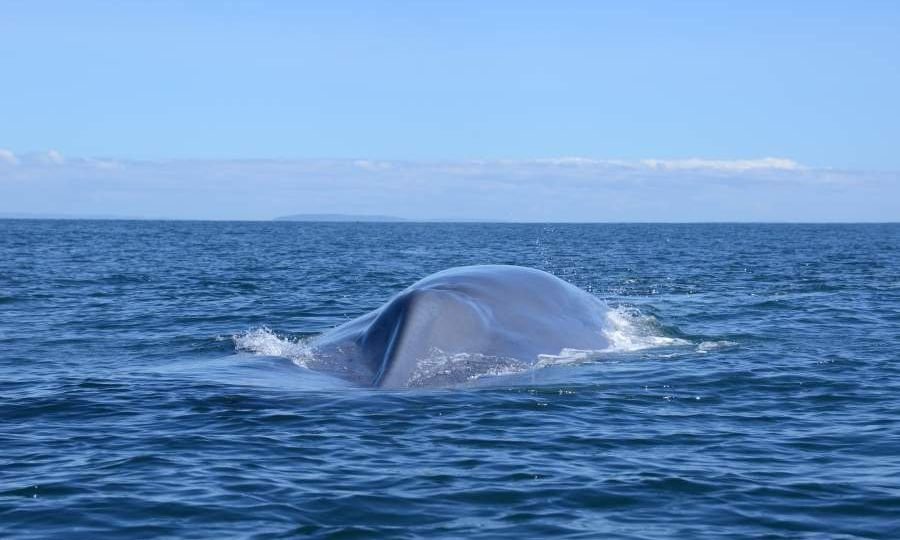
Collisions between whales and vessels are one of the main threats to these cetaceans today. This, considering that 90% of the transport of goods in the world is done by sea.
In fact, it is estimated that between 2007 and 2019 more than 1,200 whales in the world died from collisions.
In response to this difficulty, MERI Foundation and the Chilean Ministry of the Environment announced the development of an early warning pilot project in Northern Patagonia known as the Blue Boat Initiative, which, by means of smart buoys, will provide information to vessels about the close presence of these mammals to avoid collisions.
The first six buoys are expected to be installed by the end of the year or early next year depending on the evolution of the pandemic in the Corcovado Gulf and Chiloé Island.
After its implementation in the southern part of the country, it is expected that the project can be replicated in other areas with a high presence of whales such as the Strait of Magellan, Chañaral de Aceituno, and the coasts of Antofagasta and Arica.
Sonia Español, in charge of the MERI Foundation’s cetacean area, indicated that maritime traffic is currently the main threat to marine mammals as a result of collisions.
“We are talking about large vessels that usually do not have the capacity to see the whales and therefore can collide with them without even realizing it. This is a worldwide problem that also affects Chile,” she said.
Español added that Chile has around 43 species of marine mammals, adding that of the 11 species of whales that exist in the world, nine circulate along the country’s coasts. Therefore, these risks are higher.
According to the researcher, land transportation is much more difficult from Patagonia to southern Chile and in the Strait of Magellan due to the geography of the country. Thus, it is normal and common that both people and goods are moved by sea, which increases the risks of collisions between vessels and marine species.
Also, Chile has an important role in the transport of goods within Latin America as it has major ports, which increases maritime traffic and therefore the risk of collision.
No Official Records
As for the annual number of whales that die due to ship strikes, keeping track is a challenge because the collisions are involuntary, said the project designer. And when these collisions happen in the deep sea, the species fall to the bottom of the sea.
For this reason, quantifying the problem is difficult as reported ship strikes of whales that are washed up on the beach, will never give accurate estimates of the real numbers of whales involved.
In addition, many reach the coasts, but in places where people have no access. Therefore, there is no record in these cases either.
“International figures estimate that over 1,200 whales died from collisions from 2007 to 2019. And, in a great effort, we have been able to register eight dead whales in Chile since 2017. Ship strikes are not registered at a country level. The information comes from a joint effort between the scientific world and civil society that report this type of accident. Thanks to this we sort of have a record,” she said.
Smart Buoys
The project considers the installation of smart buoys equipped with hydrophones, oceanographic sensors and transmitters that will begin to operate, as a pilot, first in Northern Patagonia which is the area with the highest concentration of blue whales and other cetacean species in Chile.
This way, the hydrophones located in the buoy will capture the sound of the whales and the build-in transmitter will be able to send the location of the mammal to the vessel via satellite and in real time.
The satellite information collected will not only allow monitoring the whales and warning vessels of their presence, proposing new routes to avoid collisions, but will also provide relevant data on oceanographic factors that affect climate change such as sea temperature, acidity, oxygen, etc.
A methodology that is already used in other countries of the world such as the United States and several European countries. Therefore, its effectiveness is already proven.
The Chilean Minister of Environment, Carolina Schmidt, emphasized that “the conservation and sustainable management of our ocean and its biodiversity is essential to maintain its unique ecosystems, some of which are fundamental to help mitigate climate change through heat absorption and carbon sequestration.”
After its implementation in the south of the country, the initiative will move to the north and consider the coasts of Arica and Antofagasta, specifically Bahía de Mejillones.
“We are evaluating that it should be closer to Mejillones, because it is still a very important commercial port in Chile and has a high presence of whales. So, it is one of the vulnerable places this initiative could try to help,” she said.
“Ship strikes are not registered at a country level. The information comes from a joint effort between the scientific world and civil society.”
Sonia Español, in charge of the MERI Foundation’s cetacean area
1,200 whale deaths from collisions have been recorded worldwide between 2007 and 2019.
Source: El Mercurio de Antofagasta

